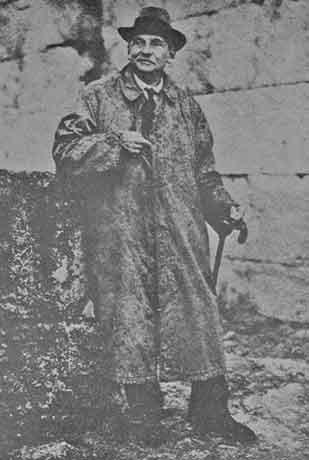.

Sir Arthur John Evans (July 8, 1851 – July 11, 1941) was a British archaeologist. He is best remembered for uncovering the civilization he dubbed "Minoan", which had been a dim mythic memory.
Evans was the son of Sir John Evans, a paper manufacturer and amateur archaeologist of Welsh descent. Educated at Harrow, at Brasenose College, Oxford, and at the University of Göttingen, and having inherited his father's interest in archaeology, Arthur was curator of the Ashmolean Museum in Oxford from 1884 to 1908.
Evans' special interest was the Greek island of Crete, and he was largely responsible for the excavations of the palace-city of Knossos, chief centre of the Minoan civilization, which uncovered the site that is open to visitors today. Not only did he discover these remains and publish them in four volumes The Palace of Minos at Knossos (1921–1935), a classic of archaeology, but he substantially restored and partially reconstructed them, using some foreign materials like concrete that are offensive to purists but help the average visitor "read" the site. While many of his contemporaries were interested in removing items of interest from the sites they uncovered, Evans wanted to turn Knossos into a museum where Minoan culture could become tangible, as he was far more interested in building a whole vision of the past than simply displaying its riches.

Though deciphering and translating the scripts found on the site always eluded him, Evans recognized that they were in two scripts, which he dubbed "Linear A" and "Linear B". He – correctly, as it turned out – suggested that Linear B was written in a language that used inflection.
Evans, however, should also be remembered for his own irrationally obstinate Creto-centrism, which led to unfriendly debate between himself and the mainland archaeologists Carl Blegen and Alan Wace. Evans' insistence upon a single timeline of development, climax, and decay for Bronze-Age Greek civilization based upon his dating of Knossos and other Minoan palaces ran contrary to Wace's dating of Mycenae, which saw its heyday in the midst of Knossos' decline, as well as Blegen's discovery of Linear B tablets at Pylos, which he (correctly) speculated were, in fact, Greek. Nevertheless, Evans generated strange and convoluted explanations for these findings, and in enmity, he actually used his influence to have Wace removed from his tenured position at the British School of Archaeology in Athens.
Evans was knighted in 1911 for his services to archaeology, and is commemorated both at Knossos and at the Ashmolean Museum. The excavation at the site of Knossos (which he purchased in order to preserve it), has been continued to the present day by the British School of Archaeology, Athens.
Retrieved from "http://en.wikipedia.org/"
All text is available under the terms of the GNU Free Documentation License


